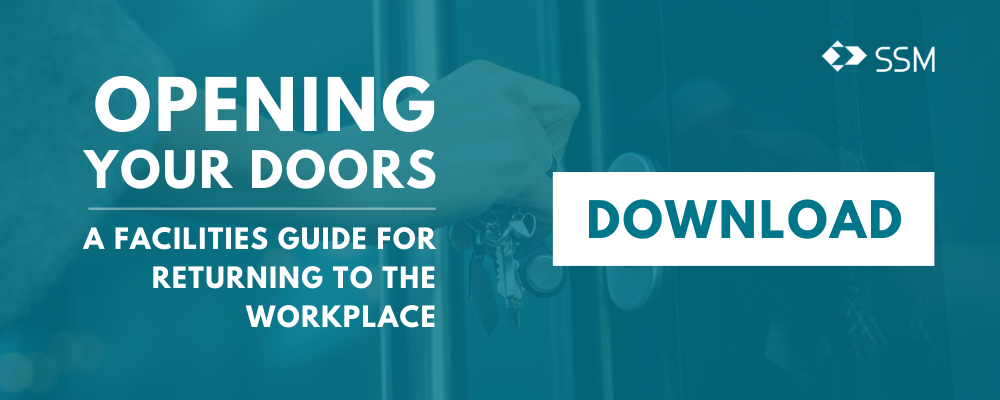Crisis as a Motivator: Having What You Need When You Need It
/There are many reasons we delay executing on matters, particularly some important ones that as company leaders we have strategically identified and prioritized. Remote working, for instance, is one that had been on the radar long before the COVID-19 pandemic. Many have taken steps to gradually institute technology upgrades, make policy changes, and encourage a few people to use it. And then, in less than 2 weeks, around the world organizations migrated to a completely remote workforce.
The crisis forced many to finally, and quickly, execute an important strategic objective that they’ve been considering for a long time.
What other important strategic objectives linger for your facilities management and operations staff to navigate the next storm?
Has archival storage and electronic retrieval of building site, infrastructure, plans and equipment information been on your list?
For many, SSM has been collecting design phase building information for existing facilities utilizing 3D scan equipment, Revit Modeling and GIS tools. In other cases, the complete, accurate collection of all existing building and site information was identified as a strategic objective for the following reasons:
Capability to remotely access accurate building plans for emergencies like power outages or unexpected shutdowns
Remote Facilities Management in conjunction with BMS or SCADA tools
Collaboration tool to provide continuity of essential facilities operations/upgrades
What we’ve discovered as a result of the recent crisis, is that the foresight of the important archiving of existing building information also fostered a great collaboration tool for owners, architects, engineers and contractors to all work through design without the need to physically access buildings.
I recently asked a client for whom we developed a comprehensive site and building model whether the investment provided unforeseen benefits in light of the COVID-19 crisis.
“Our engineering tasks are required to be done remotely. This is the most likely benefit to having the facility fully scanned, to continue with design and construction tasks required by our engineers. I know my engineers are using screenshots to communicate certain field tasks that would otherwise have required them to be on-site. (…) My engineers are also using 2D exports to develop RFQs and getting solid project estimates so we can work through the more time-consuming, administrative, procurement process now. These are all tasks that allow progress when otherwise companies would be at a standstill.”
Internally, SSM’s design workflow has also benefitted greatly from moving to scan collection in a majority of our projects. One of our senior mechanical engineers shared,
“Our client added some additional scope to our project that was to evaluate and design a new gutter system inside their chiller building. The gutter and associated piping is visible in the scan data, so I was able to add that right in to the REVIT model. If we were just relying on traditional field work, we would never have had that info because it was not part of the original scope of work. Having a scan of the project can be a big time saver and reduce the number of on-site trips needed. Plus- it reduces human error.”
Crisis doesn’t have to be your only motivator. But, it certainly can be good one. Now that many organizations are progressing out of the urgency phase of dealing with the COVID-19 pandemic, we are beginning to have conversations about what we have learned, and what we will better prepare for the future.
Taking steps now to finally collect and archive accurate 3D building information and infrastructure through GIS is easier and faster than you may imagine. Executing this objective will offer many-fold benefits for daily operations and crisis management.
For more information: Executive Vice President Patrick McCoy, PE, LEED AP, CSDP
610-898- 3008 | patrick.mccoy@ssmgroup.com
#ProblemSolved: Read more about our Surveying and Data Capture Department


